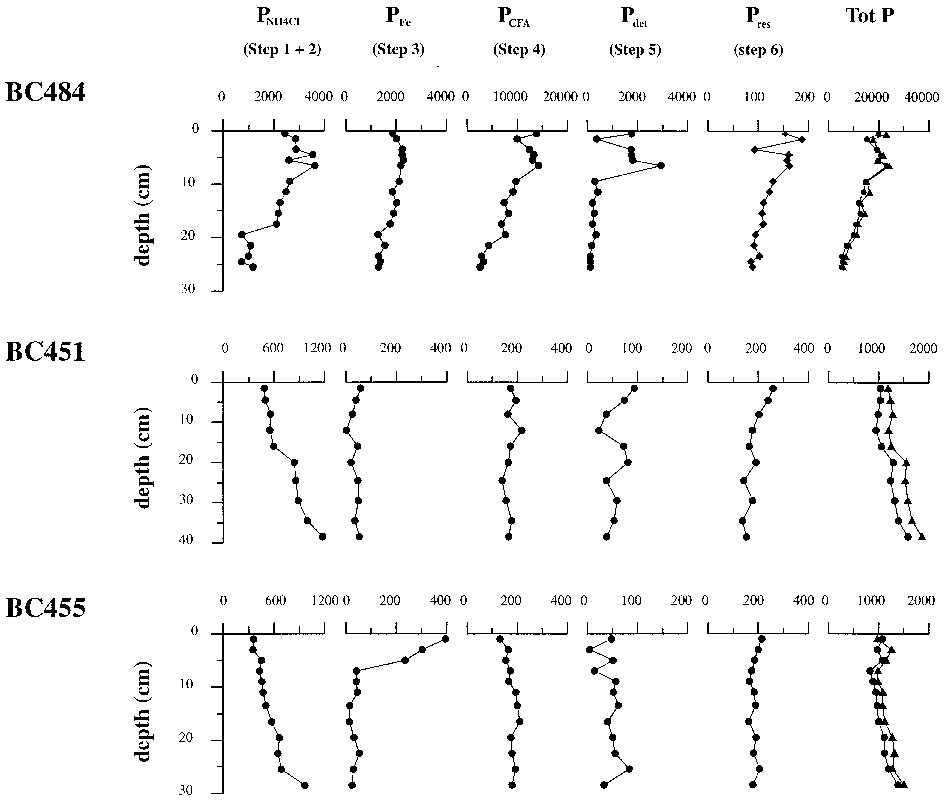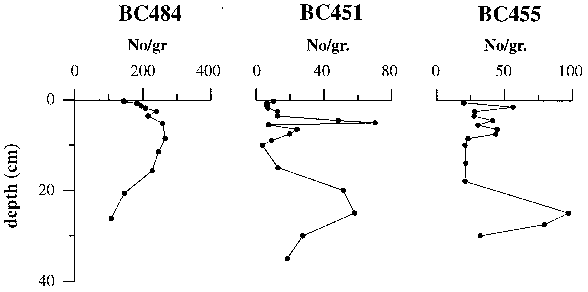Abstract: We study fish scales as a proxy of fish abundance and preservation biases together with phosphorus from fish remains (P fish ) in a sediment core retrieved off Callao, Peru (12°1′S, 77°42′W; water depth=179 m; core length=52 cm). We interpret our results as a function of changing redox conditions based on ratios of redox-sensitive trace elements (Cu/Al, Mo/Al, Ni/Al, Zn/Al, V/Al), terrigenous indicators (Fe in clays, Ti, Al), and biogenic proxies (CaCO 3 , biogenic opal, total nitrogen, organic carbon, barite Ba). The core covers roughly 700 years of deposition, based on 210 Pb activities extrapolated downcore and 14 C dating at selected intervals. Our fish-scale record is dominated by anchovy ( Engraulis ringens ) scales followed by hake ( Merluccius gayii ) scales. The core presented an abrupt lithological change at 17 cm (corresponding to the early 19th century). Above that depth, it was laminated and was more organic-rich (10–15% organic carbon) than below, where the core was partly laminated and less organic-rich ( fish /P total ratios were also observed within the upper 17 cm of the core. The behavior of biogenic proxies and redox-sensitive trace elements was similar; more reduced conditions corresponded to higher contents of CaCO 3 , C org , total nitrogen and fish scales, suggesting that these proxies might convey an important preservation signal.












